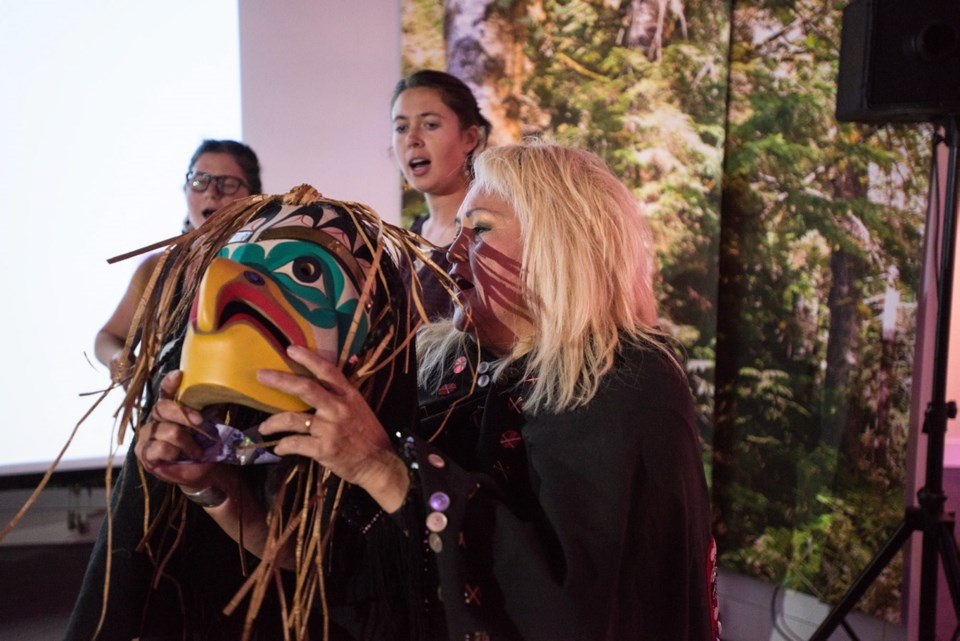For Jessica Sault, of the Tseshaht First Nation, the history of her people is remembered most vividly when it is sung.
Sault was at the Royal B.C. Museum’s Our Living Languages exhibit on Friday to launch a project to digitize recordings of First Nations songs. For her, it will be a modern link to a rich and varied tradition.
“There are fun songs, welcome songs, paddle songs, dinner songs, hunting songs, gratitude songs and animals songs,” said Sault, who donated 170 cassette tapes made by her musician/audiophile father at the family home in Port Alberni beginning in the 1950s.
“Songs tell us who we are.”
Digitizing the recordings will make them more widely accessible over the Internet. The project is being carried out with $50,000 from the TD Bank Group.
The Our Living Languages exhibit opened in 2014, part of an effort to preserve the 61 dialects of the 34 First Nations languages in B.C. The languages account for about 60 per cent of Canada’s First Nations languages.
Doris Bear, of the Peguis First Nation in Manitoba and TD’s vice-president of Indigenous banking, said she hoped the project will bring new life to cultural traditions.
“Imagine the impact on young people, who, for the very first time, gain access to the voices of ancestors, people whom they may have never even met in person,” Bear said.
Jack Lohman, the museum’s chief executive officer, said converting the material to digital format allows the museum to offer easier access to what he called an overlooked cultural treasure.
“It’s a vast and underrated treasure of rich and often very personal information of and about Indigenous peoples in British Columbia,” Lohman said.
But ease of access does not mean posting the recordings all over the Internet. Access will be granted only to people who have permission to hear the songs.
Sault explained First Nations traditions can be quite strict about songs, with guidelines to go with just about every one: who may sing it, on what occasion, and the time of day it may be voiced.
Even the audio files recorded by Sault’s father will be distributed only once the museum has obtained permission from the family.
“The ownership of songs is taken very seriously,” Sault said. “It’s called ‘protocol.’
“We can’t just sing someone else’s song unless we are given permission.”
Ember Lundgren, the museum’s preservation manager, said the museum is facing a looming deadline when it comes to its audio collection.
Lundgren said audio tapes last 30 to 40 years before their chemicals break down. The tapes in the museum’s collections were mostly made in the 1950s, ’60s and ’70s.
“They are already at the end of their life, so we have to digitize them now,” she said.



